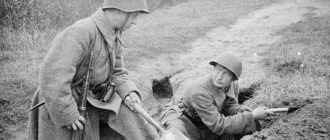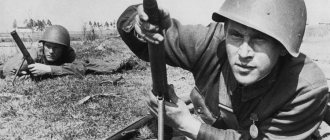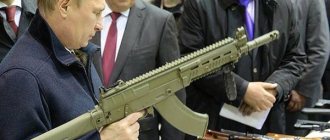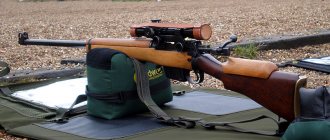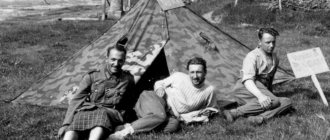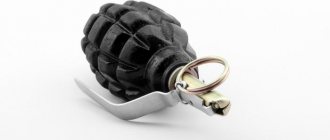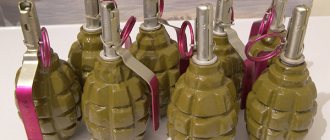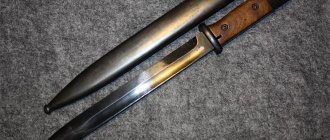Every man, especially those who served, will agree that military clothing is considered the key to the high combat effectiveness of military forces. In Russia, military uniforms always meet all the necessary requirements: they are reliable, comfortable and perform all their main functions. Today in Russia every soldier of the military forces is equipped with a military uniform. Still, uniforms are one of the important aspects of service.
Let's consider what a sapper shovel is, the history of its creation, who invented it, the main features, advantages and disadvantages of the invention.
When and how did the MPL appear?
The small infantry shovel was invented by the Danish officer Mads Johan Buch Linnemann (1830-1889). He received his higher military education in 1849, and in 1864 participated in the Alse War (Danish-Prussian War) as a company commander.
At the front, he invented a multifunctional shovel. It could be used as a frying pan, a knife, and, of course, as an entrenching tool. Linnemann was presented to the captain in 1867, and in 1869 his invention was patented, and the shovel, much simplified, was introduced into service with the Danish army in 1870. But only 256 entrenching tools were produced per battalion, i.e. only every third person received a shovel.
In 1871, Linnemann traveled to Vienna, where he began producing an Austrian version of the shovel. For the Russian Imperial Army, 60,000 pieces were ordered for 30,000 rubles.
The history of the appearance of the sapper shovel
The small sapper shovel was invented back in 1869, when the Dane Linnemann (who was an infantry captain) received a patent for it. In Denmark, the new product was received rather coolly, which is why Linnemann opened production not in his homeland, but in Austria in 1871. The captain received one of the first large orders for his shovel from the Russian tsarist army, which ordered 60,000 shovels for 30,000 rubles. The novelty was appreciated by the Russian infantry.
Due to its compactness and ease of use, this type of shovel quickly took root in armies around the world.
Around these years, the first instructions for using a small sapper shovel (MSS) appeared. These rules have been preserved to this day, only some features of the use of MSL (MPL) as a weapon have been added to them. In modern manuals, a small universal soldier's shovel is called both MSL and MPL (small infantry shovel). The appearance of the classic sapper shovel has changed little over the years, only the materials, design and dimensions have changed.
Although the name of the shovel contains the word “sapper”, it is used by all types of modern infantry, from simple motorized rifles to elite special forces units (however, for them there is a special forces sapper shovel of a folding design). The main purpose of a sapper shovel is to dig a trench or dig in, and this often has to be done under enemy fire. To create serious engineering structures, large engineer shovels (BSL) are used, which are similar in size and shape to ordinary bayonet shovels.
Features of the design of the sapper blade
The small sapper blade successfully survived the Second World War and a series of other conflicts of the 20th century in which the USSR army participated. Currently, this instrument is still in service with the Russian army. It consists of the following parts:
- A bayonet, which is also called a blade;
- Wood cuttings are usually birch.
Since the Russian army has been studying hand-to-hand combat using MSL since the times of the USSR, forged steel was used to create it. It is possible that no one would forge bayonets for shovels nowadays, but army warehouses are still overflowing with products produced during the Soviet era. Models produced in the 1950s are considered to be of the highest quality.
Having received a new blade, experienced fighters sanded the handle with sandpaper, giving it a more comfortable shape for their hands. During the Second World War, it was popular to scorch the cuttings over an open fire. Unlike the Bundeswehr sapper blade, which is foldable, which significantly reduces its efficiency, the Soviet entrenching tool has a holistic design.
There are various models of infantry or engineer shovels. They have different bayonet shapes:
- The most popular is the pentagonal bayonet shape. The famous Soviet model MPL-50 has exactly this;
- Quadrangular shape;
- Oval.
NATO example - we don’t need that
If we talk about the most popular infantry shovel, which is precisely used in NATO countries, then we can safely say that our domestic shovel is the best in the whole world. Some are probably ready to argue with this, because the functionality of the Russian shovel is very simple, but this is the main advantage of the domestic model.
The infantry shovel, which is used in NATO countries, seems to be a worthy example. It can be folded in three, which makes it very compact; it also has huge functionality, like the Chinese model. Its main advantage is the ability to adjust the inclination of the steel tray of the shovel, thanks to which it can also be used as a pickaxe. However, these abilities can play a cruel joke on the owner of the instrument.
© youla.ru Bundeswehr sapper shovel.
The fact is that the mechanism by which the tool unfolds can easily become clogged and come out of position, then bringing the shovel to its full-size state will be difficult. If we talk about the combat usefulness of this tool, then in hand-to-hand combat the use of such an infantry blade will be very doubtful. To use it as a bladed weapon, it takes time to bring the blade into combat readiness, but this time will not be available on the battlefield. We can safely say that the NATO shovel is more suitable for everyday use and not for combat operations.
So, the small infantry blade has become the best friend of the modern soldier. Over the course of 100 years, it has consistently helped soldiers on the battlefield and is still successfully used by fighters from different countries to this day.
Household use
Nowadays, the main users of MPL (except for the military) are tourists and hunters. A sharpened shovel can perfectly chop branches, chip ice, and with its help you can make tent pegs and cut wire. Thanks to its compact size, it does not restrict movement and does not cling to branches. In case of danger, a shovel can be used as a weapon.
Drivers in the USSR often carried MPL 50 in the trunk. In addition to the fact that it can be used to dig out a car stuck in the mud, the shovel was perfect for “calming down” hooligans. After a couple of energetic swings, the rare brawler dared to continue his hooligan actions.
A few more unusual ways to use MPL:
- As an oar for a boat or raft;
- You can use the bayonet of a shovel as a support for a jack;
- A sharp shovel does an excellent job of chopping wood and chopping food;
- The shovel can be used as a frying pan.
It is better not to overuse the last point, since it is not hygienic and, with intense heating, the bayonet of the shovel may lose its hardening.
What types of “sappers” are there?
Depending on the shape, design, size of the bucket, holder and other indicators, there are 3 types of tools. Now we will consider each of them in detail, determine the relevance of use for solving a particular problem and highlight the main advantages and disadvantages.
- MSL small sapper shovel. A very light and compact instrument, the length of which does not exceed 80 centimeters (there are models of 70 and even 60 centimeters, but they are rare). It is intended for hiking because it takes up little space and fits perfectly on the side wall of a backpack. You can use it to dig a fire pit, chop firewood (a durable ladle and smooth sides can be used as a light hatchet), and make a small trench. Working at home is difficult because you have to bend over a lot. Some people use it when working in tight spaces.
- Large mining shovel. This is already a tool that is in demand not only on a hike, but also at home. It is intended for digging foundations, working in the garden, as well as performing many other tasks that are not possible with large garden tools. The size does not exceed 110 centimeters (the most popular model is BSL-110). The length of the bayonet is 26 centimeters, the width is 19 cm. An ideal option for pouring a foundation, since an ordinary shovel makes a wide furrow, and excess consumption of concrete is ensured (and it will simply become inconvenient to work in a trench).
- Folding sapper shovel. It can be from 100 to 170 centimeters long, depending on the model. Now European manufacturers supply dozens of different tools, each of which has its own folding principle. The most popular is the applied one, where the handle is folded using a lever method. An excellent tool for the garden, which can be easily folded into the trunk of a car, and after assembly, used almost like a full-fledged bayonet shovel. The only difference is that the bucket has a quadrangular or pentagonal shape.
The last 2 options are much better suited for summer cottage use, since it is much more convenient and productive to work with. It is better to use a small bucket (first on the list) as a traveling option, since working on foundations, in the garden or in the vegetable garden is very inconvenient - your back “disappears” in 1-2 hours.
Weapon or entrenching tool?
The first battle using a sapper shovel took place at the beginning of the First World War. At that time, the first mass hand-to-hand fighting in the trenches began. In the cramped trenches, soldiers successfully used sapper blades, cutting with them like axes. After several such battles, it was decided to include techniques for the combat use of small sapper shovels in army training.
Thanks to its excellent balancing, the domestic MPL 50 can also become a deadly throwing weapon. Even a blunt blade can cause deep wounds, and if it is sharpened like a razor, it is quite capable of cutting through a leg and damaging the bone. From the stories of WWII participants, it is known that Soviet soldiers often preferred small infantry shovels in hand-to-hand combat. Some even gave the handle a more convenient shape so that the shovel would not turn in the hand and would always hit the enemy with a sharp edge.
The Chinese analogue surprises as always
Our friends from China never cease to amaze with their ingenuity, imagination and sleight of hand. An ordinary small infantry blade can be modified in every possible way. On the Russian market you can find blades whose side is a saw. There are infantry blades on the market for every taste and color, but the standard MPL-50 is in service, and in China it’s a little bit the opposite. Their ordinary infantry shovel is not highly rated, and the most modified shovel is more popular. In more detail, the Chinese infantry blade has even greater functionality compared to a conventional MPL, although in appearance it is not very different from our domestic one. In the Chinese analogue, you can adjust the angle of the steel tray of the shovel for more convenient digging; it can be used to cut through steel wire; moreover, the Chinese infantry shovel can be used as a climbing hook due to the fact that the steel tray can be fixed at different angles of inclination.
The Chinese have thought through not only its use in combat situations, but also during rest; this infantry shovel can be used as an opener for cans and bottles.
Selecting a small infantry shovel
These days it is not difficult to get an MPL 50 from military storage. The most common samples are from the second half of the 80s. Sometimes you come across infantry blades from the 1940s and 1950s, which feature higher quality bayonet steel. Unfortunately, such samples are becoming fewer and fewer every year, so if you come across them on sale, don’t hesitate and buy several at once - fortunately, their cost is relatively low. Such models can be distinguished by the factory mark, which indicates the year of manufacture.
After more than a hundred years of combat service, the small infantry shovel is still in service. It is no coincidence that Russian special forces pay so much attention to developing combat techniques with a small infantry shovel.
The use of a shovel during WWII
During WWII, USSR soldiers were equipped with small sapper (infantry) shovels. A soldier trained in the techniques of using MPL could dig in in 10 minutes (make a trench for prone shooting). The very first trench battle showed all the advantages of the infantry shovel as a weapon. Soviet soldiers, accustomed to working hard with shovels, used them to chop down enemies like axes.
The folding sapper shovel that the Germans used could be fixed in different positions and was much more convenient for digging and transportation. But fighting with such a shovel was difficult, since the pedantic Germans simply could not imagine how to use an entrenching tool for combat. The Soviet soldiers seemed all the more terrible to them, chopping with a sapper's shovel right and left.
Despite its outstanding combat qualities, the main function of the small infantry shovel is to dig trenches. You often had to work with a shovel on your knees and under enemy fire, so a large shovel was inappropriate in such cases.
Why has the MPL become a kind of symbol of a soldier in Russia?
Remember the common poster from the USSR times “A shovel is a soldier’s friend”? So, she really is a friend.
Here, for example, is the recollection of front-line soldier A.D. Volkova:
“But the sapper’s shovel deserves special attention! What is not praised in poems, songs, films with a military theme: tobacco, a glass, mail, etc. It is immediately clear that these singers did not even smell front-line gunpowder. The most worthy of praise is the sapper's shovel! A soldier can throw away a pot, a spoon, even a rifle, the bayonet of which he threw away long ago, but only death will separate him from the spatula. The spatula saves soldiers not only in close combat. After all, this is an ax, a knife, a frying pan and other countless uses...
We must pay tribute: most of the blades are made of good steel. Only those made in a hurry did not have one of the edges of the shovel sharpened at the factory. But the soldier will still imprison himself. And then he sharpens it so that the blade not only chops, but cuts well, and some even shave with it! But you have to fry with it carefully! Don't let her lose her temper. Horse meat needs to be cooked for a very long time, but you can quickly fry it on a shovel. After all, it’s rare to come across telegraph wire to fry kebab on. You could use a bayonet, but it’s thrown away: extra weight... You can talk a lot about the shoulder blade. She should have a monument erected.”
It must be said that the shoulder blade was generally one of the symbols of the First World War. I would like to show a shovel from my collection, where, in memory of the 1914 war, a commemorative engraving was made “In memory of our heroes who died in the trenches.”
MSL device (MPL)
MSL (MPL) is still in service with the Russian army. Its design is known to everyone and consists of:
- Steel blade or bayonet;
- Wooden cuttings.
Due to the fact that a small sapper (infantry) shovel sometimes has to be used as a weapon, forged steel with hardening is used to make its bayonet. A wooden handle is usually made from hardwood and is not painted. The end of the handle ends with a thickening in the form of a ball or “mushroom”, which protects the tool from slipping out of the hand. Stocks of shovels in military warehouses are coated with a special preservative lubricant to avoid rust (the carbon steel of the shovel bayonet quickly rusts in high humidity).
To better hold the cutting, it is sometimes sanded and singed over a fire. There are folding models of shovels (for example, the Bundeswehr engineer shovel), but they do not have structural integrity, which leads to a significant decrease in labor productivity.
Different models of sapper shovels have different bayonet shapes:
- Pentagonal (like MSL (MPL) 50);
- Quadrangular;
- Oval (quite rare).
MPL 50 has a bayonet width of 15 centimeters and a length of 18 cm, with a steel thickness of 3-4 millimeters. The two edges that are involved in digging must be sharpened, and the sharpness depends on the type of soil being dug. The side edges are often also sharpened, which helps when cutting roots. There were blades where one of the side faces was sharpened in the shape of a saw, which turned out to be inconvenient and ineffective in practice.
If the MPL is equipped with a lanyard to prevent the blade from being lost in battle, and all its edges are sharpened, then it is used primarily in hand-to-hand combat. Such a shovel is easy to throw, and it will chop no worse than a light hatchet.
To carry a small infantry shoulder blade, a standard canvas cover is used, which can be attached to elements of a soldier’s equipment. Sometimes the case is equipped with a special pocket in which an anti-fragmentation element is placed, used as armor.
Which material to choose
Today, a ladle can be made from almost any metal, but the most popular are the following varieties:
- iron - simple, cheap, nothing extra. The only drawback is poor strength and corrosion;
- stainless steel - a little stronger, does not corrode , but costs 20-30% more than the previous type;
- titanium is lightweight, durable, does not corrode in any environment, but costs 3 times more than regular steel;
- duralumin is extremely light, moderately durable, and the material does not corrode at all. The only drawback is that it can bend, after which there is no point in straightening it, just throw it away. Used as a traveling, disposable option.
The optimal choice is stainless steel. If you have enough money, choose titanium. Then your shovel will become your best assistant and will serve you for many years.
